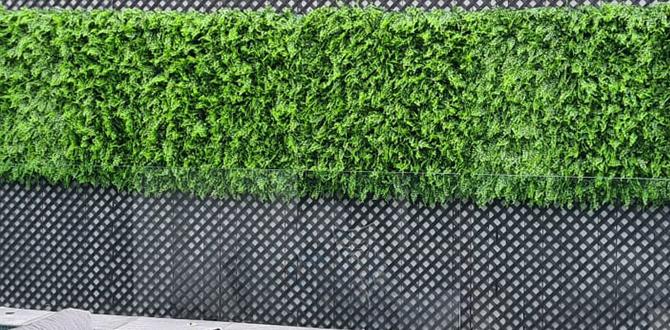Indoor climber for kids provides hours of active play, promoting physical development and imaginative adventures in a safe, controlled environment. Choosing the right one ensures fun and supports your child’s motor skills.
Are you looking for ways to keep your little ones active and entertained, especially on those days when heading outside just isn’t an option? It’s a common quest for parents: finding that sweet spot between screen time and genuine, physical fun. Boredom can strike quickly, and without the right outlets, kids might resort to less-than-ideal activities. But what if you could bring the excitement of climbing and adventure right into your home, safely and sustainably? This guide is here to show you how an indoor climber for kids can be an absolute game-changer for your family, transforming your living space into a hub of giggles and growth. We’ll explore what makes a great indoor climber and how to pick the perfect fit for your home and your child’s development.
Why an Indoor Climber is a Must-Have for Active Kids
Watching children explore, climb, and conquer is one of life’s simple joys. Indoor climbers offer a fantastic way to channel that natural energy, transforming active play from a potential mess into a structured, beneficial activity. They are more than just toys; they are developmental tools disguised as fun!
Boosting Physical Development
Climbing is a full-body workout for your little explorer. It’s incredible for developing gross motor skills, which are essential for running, jumping, and all sorts of physical activities. As kids reach, grasp, and balance, they are building strength in their arms, legs, and core muscles. Fine motor skills also get a workout as they work on precise hand placements and coordination.
- Strength Building: Supports the development of arm, leg, and core strength.
- Balance and Coordination: Enhances proprioception and spatial awareness.
- Gross Motor Skills: Crucial for overall physical development and agility.
- Fine Motor Skills: Improves dexterity through hand-eye coordination.
Encouraging Imaginative Play
A simple climbing structure can quickly become a towering castle, a pirate ship sailing the high seas, or a secret jungle gym. Indoor climbers spark creativity and allow children to create their own adventures. This kind of imaginative play is vital for cognitive development, problem-solving, and emotional expression. They learn to navigate challenges and build confidence with each move they make.
Providing a Safe Outlet for Energy
Children have boundless energy, and providing a safe place to expend it indoors is paramount. When your child has a designated climbing space, they are less likely to attempt unsafe climbs on furniture. These climbers are designed with safety in mind, often featuring soft landings, sturdy construction, and age-appropriate challenges. It’s a win-win: kids get to burn energy, and you get peace of mind.
Versatility for All Ages and Spaces
From compact, stackable blocks for toddlers to elaborate, multi-level structures for preschoolers and older kids, there’s an indoor climber to suit almost any age and space. Many are designed to be modular, meaning you can adapt them as your child grows or when you rearrange your home. This makes them a long-term investment in your child’s active fun.
Choosing the Right Indoor Climber: What to Look For
With so many options available, picking the perfect indoor climber can seem daunting. But don’t worry, we’ll break down the key factors to consider. Think about your child’s age, your available space, and your budget. Prioritizing safety and durability will ensure your climber brings joy for years to come.
Safety First: The Non-Negotiables
Safety is the absolute top priority when selecting any toy for children, especially one involving climbing. Look for climbers that meet current safety standards. Reputable manufacturers will clearly state their adherence to safety guidelines, such as those provided by organizations like the U.S. Consumer Product Safety Commission (CPSC).
- Sturdy Construction: The climber should be stable and not wobble, even when a child is actively playing on it. Check for smooth, rounded edges and secure joints.
- Non-Toxic Materials: Ensure all materials, including plastics, paints, and finishes, are non-toxic and safe for children. Look for certifications like ASTM International standards.
- Appropriate Height and Fall Zones: Consider the overall height of the climber and ensure there’s adequate clear space around it. Soft flooring, like play mats or a thick rug, is essential to cushion any potential falls.
- Grip Surfaces: Handholds and footholds should be easy for little hands to grip and not too smooth or slippery.
Age Appropriateness and Developmental Stages
Just like choosing clothes, climbers for kids need to fit their current abilities and also offer room for growth. A climber that’s too complex can be frustrating or dangerous, while one that’s too simple might not hold their interest for long.
- Toddlers (1-3 years): Simple, low-profile structures with large, easy-to-grip steps and gentle slopes are ideal. Think soft play blocks, small ramps, and tunnels.
- Preschoolers (3-5 years): Can handle slightly more challenging elements like steeper ramps, small arches, and more defined climbing walls with larger holds.
- Older Children (5+ years): May enjoy more complex structures that involve more upper body strength, balance challenges, and perhaps even elements like monkey bars or higher climbing walls.
Material Matters: Durability and Eco-Friendliness
The materials used will significantly impact the climber’s lifespan, safety, and even your home’s aesthetic. Many eco-conscious parents prefer climbers made from sustainable and natural materials.
- Wood: Natural wood climbers are often very durable and can look beautiful in a home. Look for sustainably sourced wood like birch plywood or solid wood. Ensure it’s sanded smooth and finished with non-toxic sealants.
- Plastic: High-density polyethylene (HDPE) plastic climbers are lightweight, easy to clean, and often brightly colored to appeal to children. Ensure the plastic is robust and UV-resistant if it might be placed near a sunny window.
- Foam: Soft foam climbers are excellent for younger children as they are very forgiving and lightweight. They offer a good level of cushioning but may be less durable for older, more boisterous kids.
- Combination: Many climbers use a mix of materials, such as a wooden frame with plastic climbing holds.
Size and Space Considerations
Before you fall in love with a giant climbing structure, take accurate measurements of the space where you plan to put it. Consider not just the footprint of the climber itself but also the surrounding area needed for safe play.
- Measure Your Space: Measure the length, width, and height of the intended area. Don’t forget to account for ceiling height and any furniture or obstacles nearby.
- Portability and Storage: If you have limited space or want the flexibility to move the climber, consider lightweight, foldable, or modular options. Some climbers can even be disassembled for easier storage.
Budget and Long-Term Value
Indoor climbers can range from budget-friendly foam blocks to significant investments in elaborate wooden structures. Determine your budget and look for the best value in terms of durability, safety features, and engagement potential for your child. A well-chosen climber that lasts for several years and provides ongoing fun offers excellent long-term value.
Popular Types of Indoor Climbers for Kids
The world of indoor climbers is wonderfully diverse. Let’s explore some of the most popular types, so you can get a feel for what might be the best fit for your family.
1. Pikler Triangles
Named after Hungarian pediatrician Dr. Emmi Pikler, these foldable wooden triangles are a hit for their simplicity and developmental benefits. They encourage natural movement, climbing, and exploration in a safe way.
Pros:
- Excellent for developing gross motor skills, balance, and confidence.
- Foldable for easy storage.
- Can be used in various configurations and with accessories like slides or ramps.
- Made from natural, sturdy wood.
Cons:
- Can be a bit pricey depending on the brand.
- May be best suited for toddlers and younger preschoolers.
2. Climbing Walls and Panels
These can range from simple wall-mounted panels with holds to freestanding structures. They offer a more vertical climbing challenge.
Pros:
- Great for building upper body strength and problem-solving skills.
- Can be a more space-saving vertical solution.
- Many options available, from DIY to pre-made sets.
Cons:
- Requires secure mounting for wall-mounted versions.
- Needs a soft landing area at the base.
- Can be challenging to find age-appropriate sizes for very young children without specific toddler wall setups.
3. Soft Play Climbers and Foam Blocks
Made from dense foam covered in durable, wipeable vinyl, these sets are exceptionally safe and versatile. They often come in various shapes (cubes, cylinders, ramps, wedges) that can be arranged in countless ways.
Pros:
- Extremely safe due to soft materials and no hard edges.
- Lightweight and easy for kids to move and reconfigure.
- Great for sensory play and imaginative building.
- Ideal for toddlers and younger children.
Cons:
- May not offer enough challenge for older children.
- Can be more expensive than some basic plastic toys.
- Durability might be a concern for very rough play over extended periods.
4. Multi-Activity Play Structures
These are often larger, more complex units that might include multiple climbing elements, slides, tunnels, and sometimes even playhouses. Think of a mini-playground brought indoors.
Pros:
- Offers a wide variety of activities to keep children engaged.
- Can accommodate multiple children playing at once.
- Supports a wide range of developmental skills.
Cons:
- Require a significant amount of space.
- Can be expensive.
- Assembly can be time-consuming.
5. Rock Climbing Holds and Small Boulders
For older kids with a bit more experience and gusto, dedicated climbing holds can be attached to a sturdy wall or board. Small, portable climbing boulders are also available.
Pros:
- Great for developing strength, endurance, and climbing technique.
- Can be customized to skill levels.
- Highly engaging for children passionate about climbing.
Cons:
- Requires sturdy wall or structure installation.
- Crucial to have proper padding and safety mats.
- More suited for older children with supervision.
Setting Up Your Indoor Climber Safely
Once you’ve chosen your indoor climber, the next crucial step is setting it up correctly. Proper installation and placement are key to maximizing safety and fun.
Choosing the Perfect Location
Think about where your climber will go. It needs to be in a safe, open area away from hazards.
- Clearance is Key: Ensure there’s ample space around the climber, with no sharp furniture corners, radiators, or breakable objects nearby. A good rule of thumb is at least 6 feet of clear space in front and to the sides.
- Flooring: Always place the climber on a soft, shock-absorbent surface. Thick play mats, gymnastics mats, or even a thick, well-padded rug are ideal. Avoid hard floors like tile or hardwood without ample matting.
- Away from Doors and Windows: Position it so children don’t accidentally fall into doors or windows.
- Visibility: Place it in a room where you can easily supervise your child while they play.
Assembly and Stability Checks
Follow the manufacturer’s instructions meticulously for assembly. Most climbers are designed for straightforward home assembly, but it’s crucial to get it right.
- Read the Manual: No shortcuts here! Read through the entire assembly manual before you start.
- Check All Fittings: Ensure all screws, bolts, and connectors are tightened securely. Periodically re-check these fittings, as they can loosen over time with use.
- Weight Limits: Be aware of the weight limit for the climber and any individual components, following the manufacturer’s guidelines.
Creating a Safe Play Zone
Beyond the climber itself, the surrounding area is part of the safety setup.
- Ground Cover: Invest in good quality play mats. The National Fire Protection Association (NFPA) offers excellent resources on fall protection, which can be adapted for home play areas. A mat thickness of at least 1 inch is generally recommended, but thicker is better for climbing structures.
- No Obstacles: Keep the play area free of toys, rugs that can bunch up, or other tripping hazards.
- Supervision: Even with a safe climber, active supervision is always recommended, especially for younger children.
Enhancing the Fun: Accessories and Ideas
Once your climber is set up, you can elevate the fun even further with a few simple additions. These can add new dimensions to play and keep your child engaged for longer periods.
Slide and Ramp Attachments
Many Pikler triangles and modular systems offer optional slides or ramps that can be attached. These add a new challenge and a fun way to descend. Ensure the ramp has secure railings or sides, especially for younger children.
Tunnels and Tents
Draping a fabric tunnel or a play tent over or around a climber can transform it into a secret fort or a cave, really boosting imaginative play. Lightweight pop-up tunnels are easy to set up and store.
Cushions and Beanbags
A few soft cushions or beanbags placed around the base can create a cozy reading nook or a comfortable spot to rest between climbing adventures. They also add an extra layer of softness to the fall zone.
Themed Play
Encourage themed play by adding props. Dinosaur figures can turn the climber into a prehistoric landscape, blankets can become pirate ship sails, or stuffed animals can become a jungle troop needing rescue.
Maintenance and Longevity
To ensure your indoor climber remains a safe and enjoyable fixture in your home, a little regular maintenance goes a long way.
Regular Cleaning
Depending on the material, cleaning can be simple. For wood, a damp cloth is usually sufficient. Plastic can be wiped down with mild soap and water. Make sure to let everything dry completely before use.
Periodic Inspections
Set a reminder to check the climber every few months. Look for any loose bolts, cracks in the material, or signs of wear and tear. Address any issues immediately to maintain safety.
Storage (If Applicable)
If your climber is foldable, ensure it’s stored correctly when not in use or if you need to temporarily move it. Ensure it’s completely dry before storing to prevent mold or mildew.
Frequently Asked Questions (FAQ)
What is the safest type of indoor climber for a toddler?
For toddlers, soft play climbers made of dense foam blocks are generally the safest. They have no hard edges, are lightweight, and offer excellent cushioning. Pikler triangles are also a great, safe option when used on a soft surface, as they encourage natural, controlled movement.
How much space do I need for an indoor climber?
This varies greatly by the climber. A simple Pikler triangle might only need a 3×3 foot footprint plus clearance. Larger multi-activity structures can require 8×10 feet or more. Always measure your intended space and add at least 6 feet of clear space around it for safe play.
Can I put an indoor climber on carpet?
While carpet offers some cushioning, it’s generally recommended to place an indoor climber on dedicated, thick play mats for optimal safety. Carpet can sometimes shift or bunch up, creating a tripping hazard, and its shock absorption may not be sufficient for falls from height.
How do I clean a wooden indoor climber?
Most wooden climbers can be cleaned with a soft, damp cloth. For tougher spots, use a mild soap solution and wipe clean. Always ensure the wood is completely dry before allowing children to play on it to prevent damage or mold.
Are indoor climbers worth the investment?
Yes, absolutely, if chosen wisely! They provide essential physical activity, promote development, encourage imagination, and can keep children happy and engaged for hours, especially during inclement weather. Look for durability and age-appropriateness to maximize the value and longevity.
At what age can children start using an indoor climber?
Many soft play climbers and simple Pikler triangles are suitable for babies as young as 10-12 months who are already






